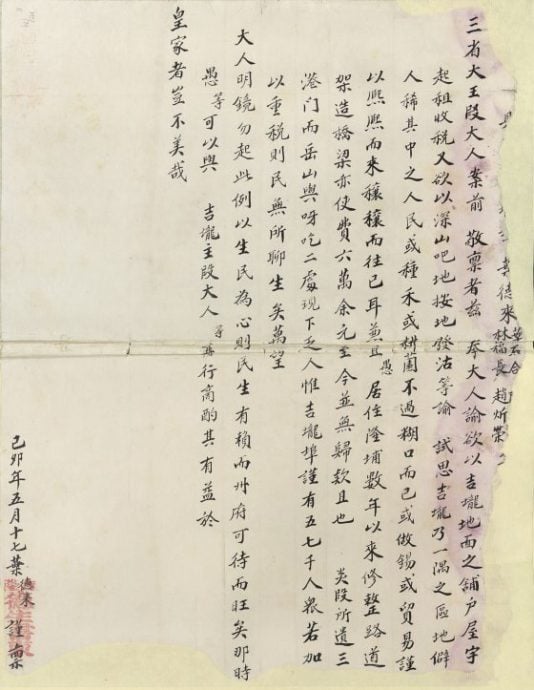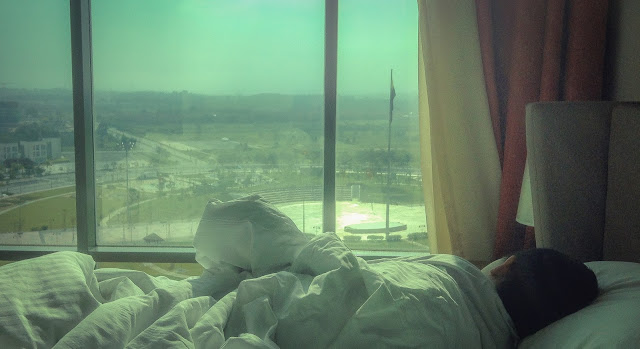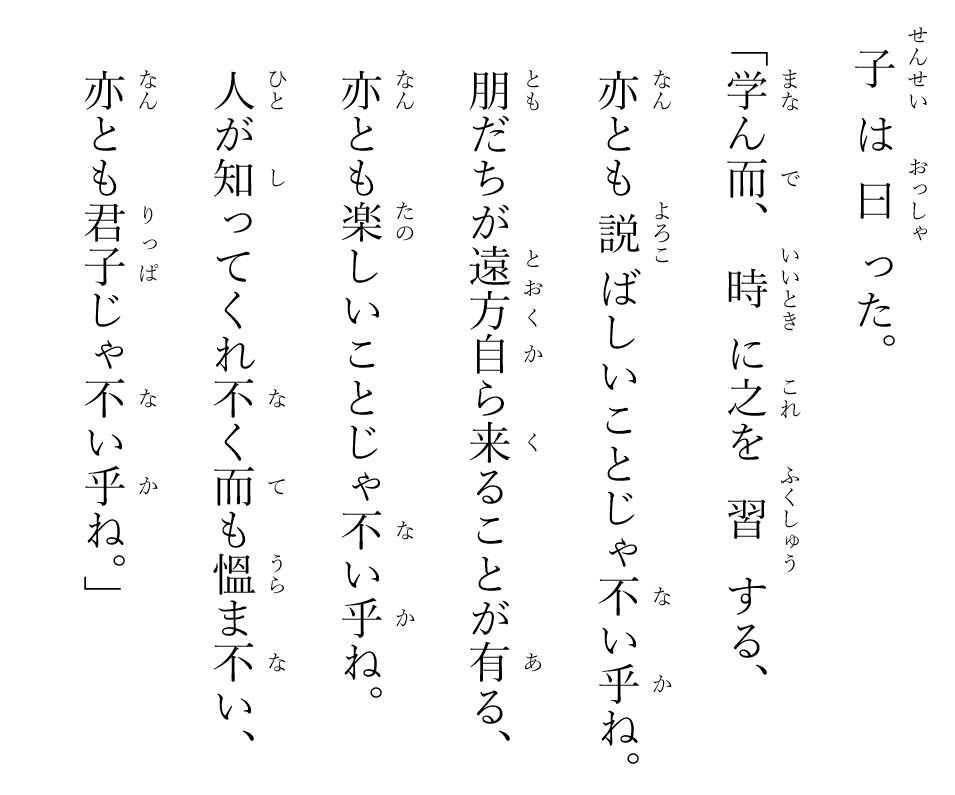Colonel Anson and his land tax implementation (1879)
A 45-year-old was received at the jetty by a distinguished gathering of officials from the Protected Native States. The names of the bigshots were Hugh Low, the Resident of Perak; William Maxwell, the Assistant Resident of Larut; and Bloomfield Douglas, the Resident of Selangor. They had assembled to bid farewell to their boss as he departed for England. With a 17-gun military salute, fired from the fort, the reign of Sir William C. F. Robinson was officially brought to an end. While the statement released to the press declared that he was taking an eight-month leave, there were however widespread rumours1 suggesting Robinson would not be returning to Singapore.
Two days earlier, on Friday, the Lieutenant Governor of Penang, Colonel Archibald E. H. Anson, departed Penang aboard the steamer Geelong, bound for Singapore. His new assignment was to temporarily assume the duties of Robinson. Unfortunately for Yap Ah Loy and the residents in the Klang valley, Anson’s appointment as Acting Governor of the Straits Settlements brought unwelcome news. One of his first actions was to increase the rate of cukai tanah (quit rent) of town lots in the Klang valley and to discontinue the practice of giving waste lands for free.
- Robinson was assigned to West Australia instead of the Straits Settlements after his long leave.
- At around the same time in Europe, a few notable events took place: (a) On 6 January 1879, Karl Pearson took the Mathematical Tripos examination and achieved the distinction of being named Third Wrangler. He would later go on to establish the first Department of Statistics at University College London. (b) On 14 March 1879, Albert Einstein was born. Years later, Pearson's The Grammar of Science would exert a significant influence on the young Einstein, helping to shape his thinking and laying the groundwork for his future contributions to physics. Also in Germany, Josef Stefan published his proportionality law on thermoradiative power flux, \(q\). Later, Stefan's law was reestablished theoretically by Ludwig Boltzmann in 1884 and the law can be written as:
$$q =
\underbrace{\Gamma(4) \zeta(4)}_{\textrm{(1)}} \cdot \underbrace{\frac{2\pi}{h^3 c^2}}_{\textrm{(2)}} \cdot \underbrace{(kT)^4}_{\textrm{(3)}}$$
where (1) is the Bose-Einstein integral, $$\Gamma(4)\zeta(4) = \int_0^\infty \frac{u^3}{e^u-1}\,du$$(2) is the Planckian term, (3) is the Boltzmannian term.
- For a taste of the extent of Yap Ah Loy’s power over Kuala Lumpur before Douglas relocated his home office from Pangkalan Batu to Residency Hill (present-day Tunku Abd al-Rahman Putra Memorial), consider the incident reported by Syers to Douglas (16 October 1879, Sel/Sec. 326/79; see also Sadka (1960), p. 307). A police escort transporting two prisoners to Kajang was ambushed along the way by a group of Chinese miners. The Chinese prisoners were freed, while the police officer was bound and, with his clothes torn, paraded through the streets of Kuala Lumpur before being handed over to the Captain China.
- In Johor, the situation was equally turbulent. On 25 October 1879, Tengku Alam ibn Sultan Ali ibn Sultan Hussein, ignited the Johor Civil War by seizing the town of Jementah. However, on 30 December 1879, Tengku Alam was decisively defeated by Temenggung Abu Bakar, the Maharaja of Johor, leading to the absorption of Muar into the territory of modern Johor. In Pahang, Wan Ahmad made a new seal for himself, addresing himself as al-Sultan Ahmad Muazzam Shah Pahang. His new title was ended with the following prayer: Allāhumma aghfir lahu wa arfaʿ darajatahu wa aʿla maqāmihi
اللهم اغفر له وارفع درجته وأعلى مقامه,
in which the Abrahamic God was invoked to raise his darajat (rank) and exalt his maqām (place).
- Policy on waste lands was eventually changed from $0 per acre to $2 per acre.
Douglas received the despatch outlining the proposed land regulations and promptly instructed H. C. Syers, the Superintendent of Police of Selangor, to consult with the business community and gauge their response. Syers completed task and submitted his recommendations to Douglas on 11 June 1879.
Superintendent Office
Klang, 11th June 1879
Sir,
With reference to your memo of the 10th instant, in which you request me to forward my views on the land regulations, proposed by His Excellency1, the administration to be adopted in this State.
I have the honor to inform that having made careful inquires among the people who are at present occupying land under the permit system, and also of those who have been granted leases under the former regulation.
I arrive at the following conclusions.
1. What if it is decided to put a reserve upset price of one cent per square foot on all town lots sold at auction and then to charge an annual quite rent of fifty cents per lot, the land will not be sold, because at present land under cultivational actually within the limits of Pancallan Battu can be purchased with grants in perpertuity for a much smaller sum.
2. Should the land at Kwala Lumpor and other mining centers be brought under these regulations and the lots now occupied be offered for sale, great opposition would be met with from the Chinese, who consider the land occupied by them of no value whatever, and would, I have no doubt, at once vacate their holdings rather than pay a premium and annual quit rent, for what they have always been accustomed to look upon, as their own property free of charges.
3. The present system of granting permits on payment of a fee of one dollar and an amount of quite rent of ten cents per acre appears to be working satisfactorily although at first it met with opposition, but I believe if the quit rent was raised to sixty cents per acre as proposed, a great number of people would leave the country they cannot afford to pay for land, most of the occupiers of waste lands are people who have come into this country since the disturbances ceased in the neighboring states, and therefore have not had time to become permanent settlers. They are now commencing to plant cocoanuts and other fruits this will make their property of some value to them eventually, then would be the time to make them pay, in the meanwhile if any stringent regulations are enforced the people will go away, as they have no interest in the country and nothing whatever to lose.
4. If town lots were sold by auction without reserve, they would probably fetch a small price, but time would have to be given for payment, the people are so poor that they are unable to live comfortably even when they get land for nothing.
5. With regard to the disposal of large tracts of land to capitalists for agricultural purposes, I have been informed that the terms on which such landspan be obtained in Sumatra are much more liberal than those offered in this State, while the security for life and property is equally as good.
I have the honor to be, Sir
Your most obedient servant
H. C. Syers
Supt. of Police
Selangor
- The governor referenced by Syers was Archibald E. H. Anson (b. 1826, d. 1925). See 1957/00000932W.
Anson was asked to take the position of acting governor when William Jervois left office in April 1877. He acted only four about 4 months before William C. F. Robinson assumed the governorship. However, Robinson's administration was short-lived and Anson had to be called in again when Robinson left office in February 1879.

- Syers anglicized Pangkalan Batu (Klang) to Pancallan Battu. Kuala Lumpur was spelt Kwala Lumpor.
- In the original permit system, the payment scheme was: A one-time premium of $1 + quit rent of 10 cents per acre per year. Anson's plan was to raise the quit rent by 6 times, to 60 cents per acre per year. Syer's proposal to Douglas was: Premium of 1 cent per square foot + quit rent of 50 cents per acre per year. Since 1 acre is 43,560 square feet, the upfront premium suggested by Syers was $435.60 per acre. Today the price of a Petaling street property is approximately 1,000 ringgit per square feet (which is about 100,000 times the rate proposed by Syers).
The present quit rent rate is 3½ cents per square foot or 152,460 cents per acre (which is approximately 3,000 times the tax rate suggested by Syers in 1879, or 15,000 times the tax rate paid by Yap Ah Loy at the time when they filed the petition).
We know from the original instruction from Clarke to Davidson (20 January 1875, 1957/0000002W), waste lands were supposed to be given for free, but only for the first three years of colonial adminstration (1875, 1876, 1877), thus Anson was merely executing a piece old policy left by Clarke.
. . . his Excellency desires that you will at once publish notices far and wide, not only in Selangor, Klang, Langat, Lukut, Linggi, and other places in Salangor, but also in Perak, Malacca, Singapore, and Penang, recalling all fugitives, promising them protection, and taking special steps for having such of them as possessed property restored to the possession of their property, and providing all of them with waste land to cultivate if they wish to cultivate . . . his Excellency is of opinion that waste lands should be freely granted to bona fide intending cultivators on terms free of state tax for 3 years, and after 3 years to be liable to 5% on estimated produce on lands cleared and cultivated subject to be commuted to a yearly money payment, but large grants of land should be sparingly given without guarantee of intended cultivation or of large sums being spent in the erection of machinery or that they should be given liable to a small tax of so much an acre, if not cultivated within a reasonable time, and kept in a state of cultivation . . .
For comparison, the policy on waste lands in Perak (passed by the Perak State Council on 4 May 1879, 1957/00000935W) is as follows: Waste lands are only for a lease of 99 years. There were two payment options: (a) upfront premium is 1 dollar per acre and a quit rent of 10 cents per acre per year; (b) premium of 2 dollar per acre with zero subsequent quit rent.

After about a month of back-and-forth discussions, a petition was drafted by Yap Ah Loy. The petition, dated on 6 July 1879, was addressed not to Douglas, but directly to Anson, the Chief of Three Provinces 三省大王, appealing for him to reconsider the implementation of the new land regulations.
具投字人葉德來、葉石,合林福長、陳金蘭、趙炘榮等
三省大王,叚大人案前,敬禀者茲

奉大人諭,欲以吉壠地面之鋪戶屋宇起租收稅,又欲以深山吧地,按地發沽等諭
試思吉壠乃一隅之區,地僻人稀,其中之人民,或種禾,或耕薗,不过糊口而已,做錫,或贸易,謹以熙熙而來,穰穰而往已耳
兼且,愚居住隆埔數年以來,修整路道,架造橋樑,亦使費六萬余元,至今並無歸欸。且也,炎叚所遺三港門,而岳山與呀吃二處現下乏人,惟吉壠埠僅有五七千人眾,若加以重稅,則民無所聊生矣
萬望大人明鏡,勿起此例,以生民為心,則民生有賴,而州府可持而旺矣!那時,愚等可以與吉壠主叚大人等,再行商酌,其有益於皇家者,豈不美哉
已卯年・五月十七・葉德來謹禀
The Chinese text can also be found in Yon Weng Woe 阮湧俰 (2024) Studies on the Selangor Secretariat archive: Introductory remarks on the petition by Yap Ah Loy et al. 雪蘭莪政府秘書署檔案研究:葉亞來聯合葉石、陳金蘭、林福長、趙炘榮請願書之探討與介紹, Xuewen 學文 26, pp. 43 - 46.
There are however two punctutation typos in Yon's reproduction of the text: (a) . . . 熙熙而來,穰穰而往,已耳。廉且愚居 . . . (b) . . . 若加以重稅則民無所聊生矣,萬望。大人明鏡 . . .
The petition is also described by Yap Yee Yin 葉洢穎. However, the petition was contextualized in a slightly different manner: 當時英國政府為了展開土地規劃,推出新的法規,分區塊和用途徵稅,但是在此前全然是一派野蠻生長之姿,並無太多約束,一旦落實,無論買賣或租賃,每一片土地都得繳稅 At that time, the British government introduced new regulations to implement land planning, taxing land based on zoning and usage. Previously, land development had been growing wildly with little restriction. Once the regulations were enforced, every piece of land, whether bought, sold, or leased, was subject to taxation. The description given Yap (2025) is clearly not consistent with the data given by Syers in his report to Douglas.
The following is a full English translation of the petition.
Before His Excellency (Tuan 叚大人), the Governor of the Straits Settlements. We, Yeap Teck Loi 葉德來, Yeap Ah Shac 葉石, together with Lim Hok Chiang 林福長, Tan Kim Lan 陳金蘭, and Cheow Hin 趙炘榮, respectfully submit this petition.
We have been informed that Your Excellency intends to increase the quit rent on the town lots in Klang and, in addition, to issue orders for the sale of waste lands in the Klang valley.
Please give the consideration that Klang is but a small and remote region, its land isolated and its people sparse. The inhabitants either grow rice or farm small fields, doing no more than eke out a living. Those who are in the tin mining business are nearly just equal, they come and go, solely to establish a modest livelihood.
We have lived in the town of (Pangkalan) Lumpur 隆埔 for several years now, during which we have repaired roads and built bridges at great expense—over 60,000 dollars so far—and to this day we have received no return or compensation. Moreover, of the three mining hamlets left to us by the Yamtuan, Selangor and Langat are now devoid of people. Only Klang remains, with just five to seven thousand inhabitants. If heavy taxes are imposed upon them, the people will have no means to sustain themselves.
We earnestly hope Your Excellency, with your enlightened vision, will not establish such a precedent. If you have the welfare of the people at heart, their livelihood will be secure, and the prefecture and state will flourish! At that time, we humble ones can again consult with the Resident of Klang and others, to discuss matters beneficial to the government. Would that not be a fine outcome?
On the seventeenth day of the fifth month in the year of Yimao, respectfully submitted by Yeap Teck Loi.
The translation appended in the original Selangor Secretariat document is as follows and it apparently did not capture everything uttered by Yap Ah Loy and other businessmen in Klang.
Petition from Yeap Teck Loi, Yeap Ah Shac, Lim Hok Chiang, Tan Kim Lan, Cheow Hin
On the Land Reg:
As to the sale of land in the State of Selangor, the payment of certain premium, the permit system. We the petitioners think that it is very hard upon the poor people, the benefit they reap from the land is scarcely sufficient to keep them alive. The miners themselves are nearly just equal.
The population is fastly decreasing and we think that to put in fore the new land regulation will hasten the decrease more quickly. We therefore pray that the new land regulations may not be put in force and beg the Resident will have another meeting on the subject.
Signed: Yeap Ah Loi
6 July 1879
- The first two petitioners obviously were of Huizhou 惠州 descent. Cheow Hin 趙炘榮 (d. 1891) was the elder brother of Cheow Yoke 趙煜榮 (b. 1843?, d. 1892) and he was of Xinning 新寧 descent. Lim 林 and Tan 陳 appears to be of Fujian 福建 descent, based on the transliteration of their surnames. The fact that all four were co-signing the petition indicates that they were still maintaining harmonious relations at the time—something that would change just a few years later by the Cantonese-Hokkien schism in Kuala Lumpur.
- 吉壠 is the Huizhou transliteration of Klang. It is sometimes also rendered as 吉冷 and 吉隆.
岳山, 呀吃, and 吉壠 are all hamlets located near the headwater of major riverine highways in Selangor, i.e. Selangor River 色壠哦河, Langat River 呀吃河, and Klang River 吉壠河. These hamlets were administrated by three different Captains, but eventually the count reduced from 3 to 1 in the collective memory of Chinese community since Selangor and Langat were not as productive as Klang (e.g. Chin Ah Chan 陳泉生 in Langat River, Yap Ah Loy 葉德來 in Klang River, Ah Kaw in Selangor River). In the petition, the glyph 隆 was invoked when Yap Ah Loy was referring to the town (埔) of Pangkalan Lumpur, but 壠 was used when he was referring the greater Klang valley 吉壠埠. In fact, the concatenation of 隆埔 was able to capture the Malay sound of lumpur and the semantic of the town (埔) of Pangkalan Lumpur. The name of present-day town of Klang is Pangkalan Batu.
Ah Kaw was mentioned in a letter addressed to Douglas (see 1957/0000060W). The letter was dated 20 August 1876. 岳 is pronounced ngok6 in Huizhou dialect and it was likely the Chinese transliteration of the last syallable of Salangore. In the seal of the British Resident of Selangor, the name of the state was rendered as 色壠哦 (set5lung2ngo1)
- The population of Chinese in Selangor in 1891 is approximately 50,844. See Sadka (1960), p. 414. This is nearly a ten-fold growth (within a span of 12 years) since the number quoted by Yap in the petition is 5,000 to 7,000. Four years earlier, in order to fund the construction of Damansara-Kuala Lumpur road, Yap Ah Loy had imposed a tax of two dollars per bahara on tin exports from Kuala Lumpur, prompting an exodus of Chinese miners. In response, on 21 August 1875, Douglas wrote to the Captain China, advising that the tax scheme be discontinued to prevent further loss of miners (1957/0000061W).
- Daly (13 December 1879, 1957/0000779W) reported to his father-in-law that the cost of constructing the 4-mile road connecting Kuala Lumpur from Anak Ayer Batu is $1,500 per mile. However, in his petition, Yap Ah Loy quoted a total of $60,000, which would equate to roughly 40 miles of paved road based on Daly’s initial figure. Yet, in the specification or request for quotation (RFQ) document sent to Yap, Daly cited a higher rate of $3,000 per mile. At the RFQ rate, Yap's $60,000 claim would only account for 20 miles of road, not 40. In fact, 20 miles is likely a more realistic estimate if we consider that the Captain China had probably only completed the Damansara–Kuala Lumpur road (⪅ 16 miles) and a portion of the roads in Pangkalan Lumpur.




Comments